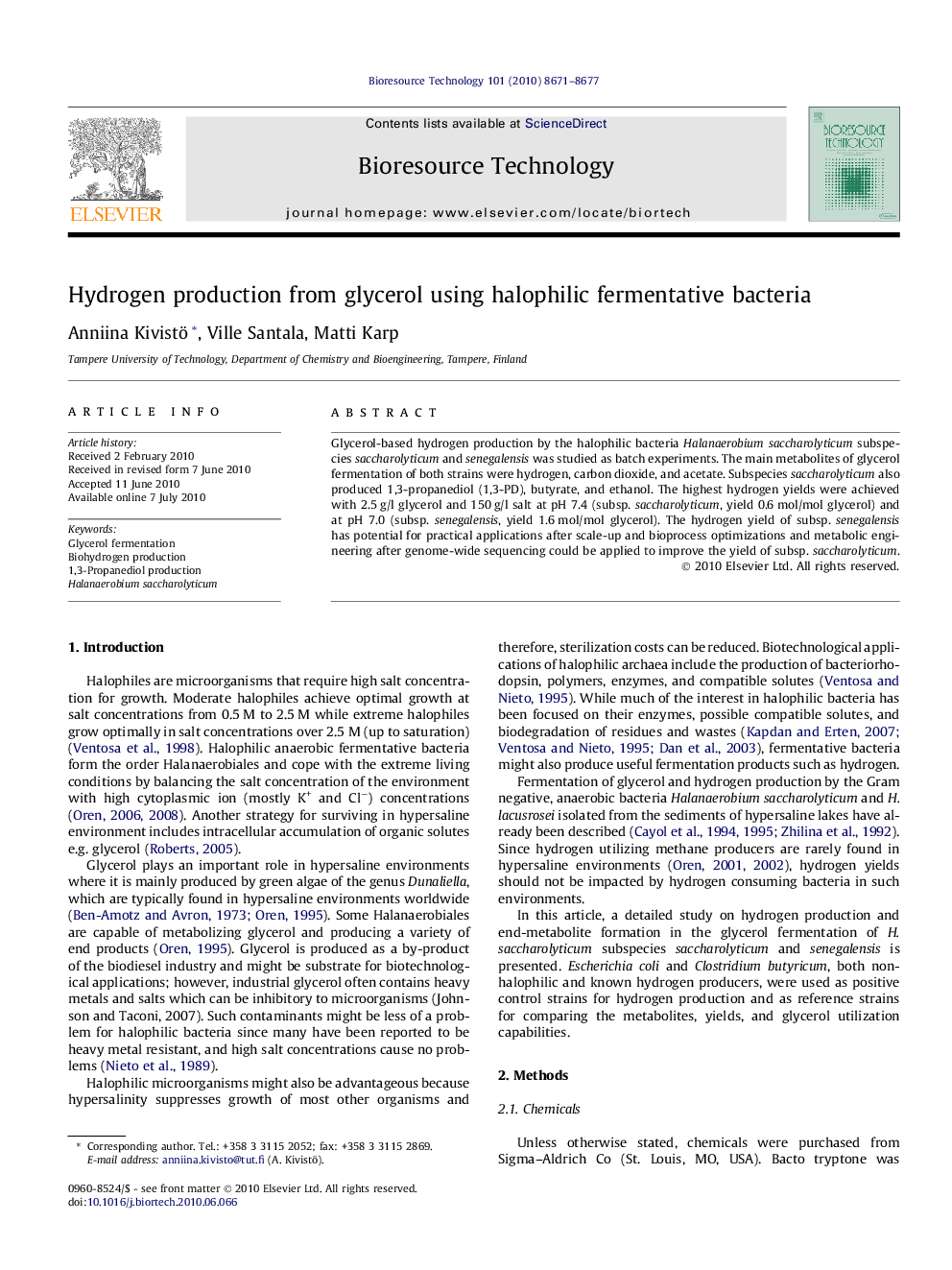| Article ID | Journal | Published Year | Pages | File Type |
|---|---|---|---|---|
| 682685 | Bioresource Technology | 2010 | 7 Pages |
Glycerol-based hydrogen production by the halophilic bacteria Halanaerobium saccharolyticum subspecies saccharolyticum and senegalensis was studied as batch experiments. The main metabolites of glycerol fermentation of both strains were hydrogen, carbon dioxide, and acetate. Subspecies saccharolyticum also produced 1,3-propanediol (1,3-PD), butyrate, and ethanol. The highest hydrogen yields were achieved with 2.5 g/l glycerol and 150 g/l salt at pH 7.4 (subsp. saccharolyticum, yield 0.6 mol/mol glycerol) and at pH 7.0 (subsp. senegalensis, yield 1.6 mol/mol glycerol). The hydrogen yield of subsp. senegalensis has potential for practical applications after scale-up and bioprocess optimizations and metabolic engineering after genome-wide sequencing could be applied to improve the yield of subsp. saccharolyticum.
